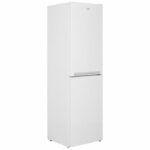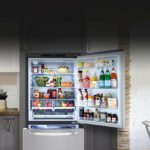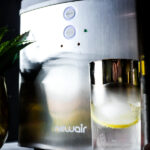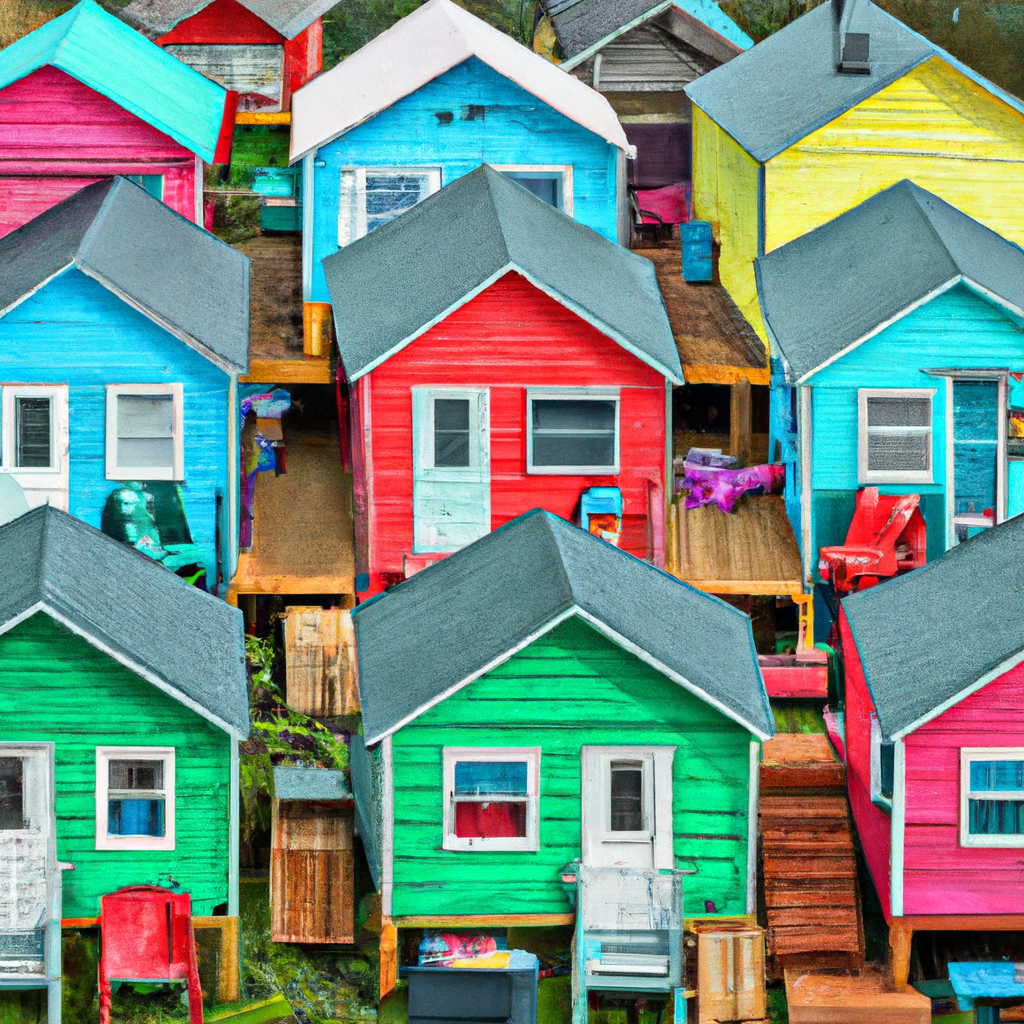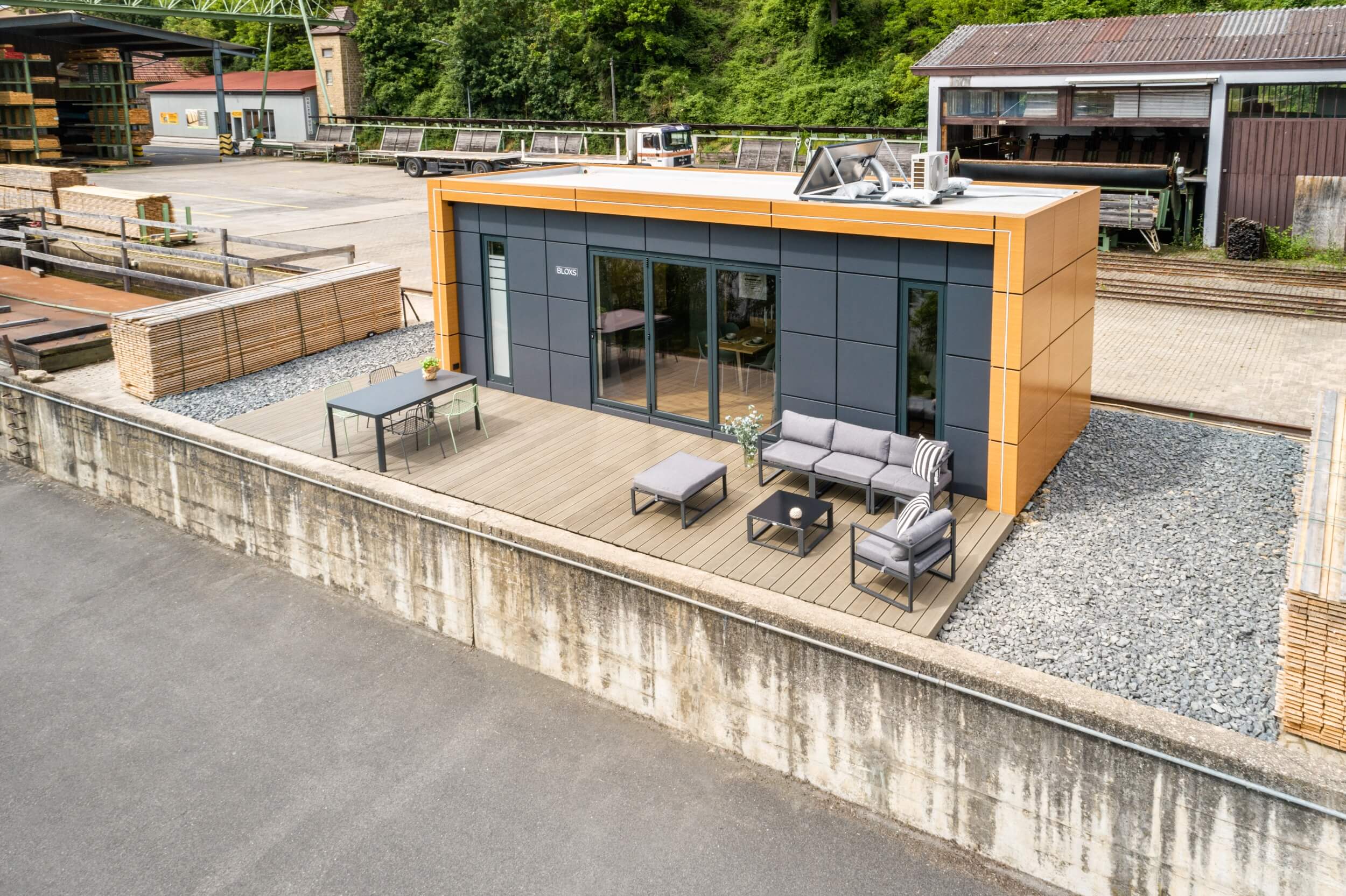Understanding and Increasing Home Energy Efficiency
One of the Biggest Household Energy Users is Your Refrigerator


Your refrigerator is one of the biggest energy consumers in your household, running constantly and using a substantial amount of power. Older refrigerators can use up to 50% more energy than newer, energy-efficient models. Side-by-side door refrigerators typically use more energy than models with separate freezer compartments. Additionally, upright freezers tend to use around 10% more energy and release more cold air when opened compared to chest freezers. Freezers that need manual defrosting consume 35% to 40% less energy than those with automatic defrosting capabilities.
Heating and cooling devices
Space heating and cooling appliances account for more than a quarter of household energy consumption. These appliances include water heaters and automatic dishwashers. Computers, refrigerators, dryers, and clothes washers are the next energy consumers. Other energy-using home appliances include outdoor grills, natural gas lights, and spa heaters.
Heating and cooling are the most energy-intensive appliances in a house, but there are many ways you can reduce their usage and lower your bills. Start with regular maintenance and replacement of parts, and make sure they’re properly insulated. You can also reduce the amount of water that you use to save energy. While water heating adds about 14% of the total electric usage in a home, it can be kept to a minimum through careful use. A dishwasher can be used in place of a washing machine to help you save water.
The Energy Policy and Conservation Act allows the DOE to enforce appliance and equipment standards. The Office of Enforcement verifies that products sold in the United States comply with energy efficiency standards. The Energy Policy and Conservation Act also authorizes the DOE to conduct research to improve the energy efficiency of products sold in the United States. The Building Technologies Office also manages appliance and equipment standards programs. These programs aim to improve energy efficiency in buildings through product testing, building envelope research, and consumer information.
Refrigerators
A new survey has shown that refrigerators are the largest energy consumers in a household. They consume around 4% of the energy used in the home. Fortunately, newer models are becoming more energy-efficient. They also feature advanced technology that alerts you when there are problems. This saves energy. For the best results, choose an Energy Star-rated model. Other big energy consumers in the home include clothes dryers and washing machines. These appliances should be used sparingly. Line dry your clothes whenever you can.
The energy consumption of refrigerators has been reported since 1990, but newer estimates from 2015 include more detail. These estimates also include the number of times that a refrigerator is opened or closed. These habits can result in a loss of 50 to 120kWh per year, or 10 to 24 percent of the 500-kWh-peryear refrigerator capacity.
If you would like to know the power usage of your refrigerator, check its energy guide sticker. These stickers indicate the power usage per year, and also the estimated cost per year. The wattage of a refrigerator depends on its size, age, and many other factors. The number of hours a refrigerator stays open is also another factor affecting the energy consumption.
Electric ovens
An electric oven consumes a great deal of energy. They require a high level of electricity flow, more than twice that of a 110-volt wall socket. They use more electricity than gas ovens which heat by burning gas. To save electricity, make sure they are closed when you cook.
Electric ovens cost between $30 and $90 to operate at 350 degrees, and can account for between 3 to 4 percent of a home’s electricity use. Gas ovens are more energy efficient, but some homeowners still prefer to use electric models. They also tend to have lower operating costs compared to electric models.
The biggest energy users in a household are appliances and lighting. Lighting can account for up to 12% of energy consumption, so it’s vital to use energy-efficient light bulbs. Also, you should turn off lights when you’re not using them. Appliances such as refrigerators and washing machines account for two to three percent of the home’s energy consumption. You can reduce energy consumption by organizing your refrigerator so that it holds less food and only use the dishwasher when it is full.
Microwave oven
Microwave ovens use a lot of electricity, which can make them one of the highest energy consumers in your home. A conventional electric oven uses 240 VAC, and it can draw up to 3,000 watts during preheating. Microwave ovens typically use 120 VAC, and most use about 1,800 watts. If you’re looking to save money on electricity, consider purchasing a more energy-efficient model and using it only when you need it.
Microwave ovens work by passing microwave radiation through the food. This radiation is non-ionizing, and can be heard at frequencies between 300 MHz to 300 GHz. Because they use ISM bands, they don’t interfere with important radio services. But they can be dangerous, as the microwave radiation can be harmful.
An average microwave oven of 800 watts can consume up to 24 kWh per month. You can use a power consumption calculator to estimate how much electricity your microwave oven consumes. The calculator will calculate the wattage and the tariff.
Pool heaters
One of the largest energy users in a home is a pool heater. In the US, an average pool heater uses about 275 watts of energy. Installing a solar pool heater can reduce your annual bill by up to $300. Solar heaters are also very affordable. They can be installed for a price of around $5,500, and they can pay for themselves in as little as three years.
A gas pool heater uses less energy than an electric heater and will continue to work even when the power goes out. A gas heater is also cheaper to buy and install than an electric heater. However, you must install a gas line for the heater to work. Gas heaters use natural gas, which is a more dangerous source of energy than electricity.
Although pool heaters can be ordered online, the installation costs vary greatly. Some cost about $1,000, while others can cost as much as $8,500. Pool heaters can also be installed on your own, saving you up to $300 or more. It is easy to get overwhelmed by the cost of installing and maintaining a pool heater.
Outdoor grills
Grills are one of the most energy-intensive appliances in a home. However, it is possible to make smart choices to reduce their impact. Grilling outdoors is a fun way to entertain friends and family, and it can help you save money on your utility bills. There are many outdoor grills to choose from. Depending on the fuel source, some are more eco-friendly than others. Natural gas and propane grills are the best eco-friendly options. Others use charcoal or wood.
Outdoor grills can be small and compact or large enough to feed a large family. It is important to consider the size of your grill. Some are made to cook one or two steaks while others can feed 12 to 15. Gas grills are more powerful and typically larger than electric grills. They can range from small countertop units for grilling a single steak to industrial-sized restaurant grills for cooking a large party of 100 people.
Gas outdoor grills are powered by a propane tank or a gas line to heat the food. Gas outdoor grills are cheaper than electric models but require more space to be safe. Additionally, gas outdoor grills can emit carbon monoxide and can cause a fire.
Backup electricity generators
Installing backup electricity generators in your home is one of the best ways you can prepare for a power cut. These units can either operate on their own or require a connection to the electric grid. They are available in a variety of fuel types, including gasoline, propane, and solar plus storage. It is important to read the manufacturer’s instructions before using a home generator, and follow all safety precautions.
Battery backups are another way to protect your home from a power outage. They can be used to power your lights and other critical loads during a blackout. However, unlike traditional standby generators they may not be strong enough to power energy-intensive household appliances.
Another way to protect your home from power outages is to install solar panels. These panels will not only provide power for your home but also reduce your monthly energy costs. Solar panels will allow you to save money on your electricity bill by running your home on clean renewable energy. You can calculate the savings that you will experience by installing a solar panel calculator.
Hi, I’m Emma. I’m the Editor in Chief of Tiny House 43, a blog all about tiny houses. While tree houses are often associated with childhood, they can be the perfect adult retreat. They offer a cozy space to relax and unwind, surrounded by nature. And since they’re typically built on stilts or raised platforms, they offer stunning views that traditional homes simply can’t match. If you’re looking for a unique and romantic getaway, a tree house tiny house might just be the perfect option.
Understanding and Increasing Home Energy Efficiency
Tiny House Environmental Benefits

Have you ever thought about the environmental advantages of living in a small house? Let me demonstrate this for you.
Imagine a world where energy consumption is minimized, carbon emissions are lowered, and sustainable materials are utilized. In this world, minimalism and conscious consumption thrive, and off-grid living is supported. People are connected with nature, finding solace in its beauty and preserving it for future generations. Innovative design solutions are inspired, leading to creative ways of maximizing space and reducing waste.
The environmental impact is greatly reduced, and awareness and advocacy for sustainable living are spread far and wide. This is the world of tiny houses, where size doesn’t dictate the impact.
In this article, we will explore the myriad of environmental benefits that come with embracing the tiny house movement. Get ready to be inspired and enlightened as we delve into the world of tiny house environmental benefits.
Key Takeaways
- Tiny houses minimize energy consumption through energy-efficient appliances and renewable energy sources like solar panels and wind turbines.
- Living in a tiny house reduces carbon emissions by utilizing renewable energy and prioritizing public transportation.
- Sustainable materials, such as reclaimed wood and recycled metal, are used in the construction of tiny houses, reducing the demand for new resources and lowering greenhouse gas emissions.
- Tiny houses promote minimalism and conscious consumption, leading to less waste generation and a more sustainable use of resources.
Minimizing Energy Consumption
Did you know that one of the biggest advantages of living in a tiny house is the ability to minimize energy consumption? Tiny houses are designed to be energy efficient, utilizing energy-saving appliances that consume less electricity compared to their larger counterparts. These appliances, such as compact refrigerators and low-wattage lighting fixtures, can significantly reduce overall energy usage.
Additionally, many tiny houses incorporate renewable energy sources, such as solar panels or wind turbines, to generate electricity and further reduce dependence on traditional power grids. By harnessing the power of these renewable sources, tiny house owners can not only save on energy costs but also contribute to a more sustainable future.
Transitioning into the subsequent section about ‘lowering carbon emissions,’ it is evident that tiny houses play a crucial role in promoting environmentally friendly lifestyles.
Lowering Carbon Emissions
By reducing the size of their living space and implementing sustainable practices, tiny house dwellers can significantly shrink their carbon footprint. One way they achieve this is by utilizing renewable energy sources to power their homes. Solar panels, for example, can provide clean and renewable energy, reducing the reliance on fossil fuels. Additionally, tiny house dwellers often choose to live in communities that prioritize public transportation. This reduces the need for individual car ownership and decreases carbon emissions associated with transportation.
By lowering their carbon emissions through the use of renewable energy sources and public transportation, tiny house dwellers contribute to a more sustainable future. Another important aspect of sustainable living is utilizing sustainable materials in the construction of tiny houses. This helps to further minimize the environmental impact and will be discussed in the next section.
Utilizing Sustainable Materials
When you choose to incorporate sustainable materials into your construction projects, you’re making a conscious effort to align your actions with your values and prioritize the health of our planet.
Sustainable building practices and the use of eco-friendly construction materials have numerous environmental benefits. Firstly, sustainable materials, such as reclaimed wood and recycled metal, reduce the demand for new resources and minimize waste.
Secondly, these materials often have a lower carbon footprint compared to traditional building materials, helping to lower greenhouse gas emissions.
Lastly, sustainable materials are often non-toxic and free from harmful chemicals, ensuring a healthier living environment for occupants.
By utilizing sustainable materials, we can contribute to a greener and more sustainable future. Encouraging minimalism and conscious consumption is the next step towards achieving this goal.
Encouraging Minimalism and Conscious Consumption
When it comes to encouraging minimalism and conscious consumption, two key points come to mind: downsizing possessions and reducing waste, and promoting a simpler and more sustainable lifestyle.
By embracing minimalism and reducing our reliance on material possessions, we can not only declutter our lives, but also reduce our environmental impact.
Additionally, promoting a simpler lifestyle can lead to less waste generation and a more sustainable use of resources, ultimately contributing to a more environmentally conscious society.
Downsizing possessions and reducing waste
Minimizing possessions and cutting down on waste are key factors in the environmental benefits of living in a tiny house. By reducing clutter, tiny house dwellers are able to live with only the essentials, which means fewer resources are needed to produce and maintain their belongings.
Additionally, living in a smaller space encourages conscious consumption and discourages unnecessary purchases. This promotes recycling, as people are more likely to repair or repurpose items instead of throwing them away.
Furthermore, downsizing possessions also leads to a reduction in waste generation. With limited storage space, individuals are more likely to think twice before buying something, considering its lifespan and environmental impact.
As a result, living in a tiny house fosters an environmentally conscious mindset and encourages sustainable practices. Transitioning into the subsequent section about promoting a simpler and more sustainable lifestyle, these practices extend beyond material possessions.
Promoting a simpler and more sustainable lifestyle
To live a simpler and more sustainable lifestyle, you can embrace the freedom of a tiny house and watch your environmental impact shrink like a deflating balloon. Tiny houses promote a more sustainable lifestyle by encouraging downsizing and reducing waste.
But it doesn’t stop there. Living in a tiny house also opens up opportunities to adopt sustainable transportation options, such as biking or using public transit, which further reduces your carbon footprint. Additionally, many tiny houses are designed to be energy-efficient and can be powered by renewable energy sources like solar panels or wind turbines. By embracing these sustainable practices, you not only reduce your environmental impact but also save money on energy bills.
Supporting off-grid living is the next step towards a more sustainable and self-sufficient lifestyle.
Supporting Off-Grid Living
Although it may seem challenging at first, embracing off-grid living in a tiny house can lead to a more sustainable and self-reliant lifestyle. By supporting self-sufficiency and promoting eco-friendly alternatives, tiny houses offer numerous benefits for those seeking to reduce their environmental impact. Living off-grid in a tiny house means relying on renewable energy sources such as solar panels or wind turbines, reducing dependence on fossil fuels. Additionally, these homes often utilize composting toilets and rainwater collection systems, minimizing water waste. In a society where consumption is the norm, tiny houses encourage a simpler and more sustainable way of living. They promote a conscious mindset about resource consumption and waste reduction. Embracing off-grid living in a tiny house not only decreases our carbon footprint but also creates a more harmonious relationship with nature. Transitioning to the next section, promoting sustainable land use, is the next logical step in creating a greener future.
Promoting Sustainable Land Use
In promoting sustainable land use, two key points that are important to consider are the smaller physical footprint and land requirements of sustainable practices, as well as the emphasis on community and shared spaces.
By adopting sustainable practices such as compact housing and minimal land use, we can reduce our ecological impact and preserve natural resources.
Additionally, fostering a sense of community and encouraging shared spaces can lead to more efficient land use and a stronger sense of connection among residents.
Smaller physical footprint and land requirements
By living in a tiny house, you can minimize your physical footprint and reduce the amount of land you require. This not only benefits the environment but also offers several advantages for homeowners. Here are four reasons why smaller physical footprints and land requirements are beneficial:
- Smaller housing costs: Tiny houses are more affordable to build and maintain compared to traditional homes, allowing homeowners to save money and reduce their financial burden.
- Efficient space utilization: Tiny houses are designed to maximize every square inch of space, resulting in a more functional and organized living environment. This promotes a minimalist lifestyle and reduces the need for excessive consumption.
- Reduced environmental impact: With less land required for a tiny house, there is a decreased need for deforestation and disruption of natural habitats. This helps to preserve ecosystems and protect biodiversity.
- Lower energy consumption: Tiny houses typically have a smaller carbon footprint due to their reduced energy needs. Heating, cooling, and powering a tiny house requires less energy, resulting in lower utility bills and environmental impact.
By emphasizing community and shared spaces, tiny house living encourages a more sustainable and connected way of life.
Emphasizing community and shared spaces
Transitioning from the smaller physical footprint and land requirements of tiny houses, we now delve into the aspect of emphasizing community and shared spaces. One of the remarkable aspects of the tiny house movement is its emphasis on fostering community engagement and reaping social benefits. Tiny house communities often feature shared amenities such as communal gardens, recreation areas, and common spaces, encouraging residents to interact and connect with one another. This promotes a sense of belonging and support network, which is often lacking in larger, more isolated neighborhoods. Additionally, shared spaces can also reduce the environmental impact of each individual tiny house, as resources like land, water, and energy can be shared among the community members. By embracing community and shared spaces, the tiny house movement goes beyond just downsizing and creates a more connected and sustainable way of living.
Moving forward, let’s explore how tiny houses foster connection with nature.
Fostering Connection with Nature
Living in a tiny house allows individuals to reconnect with nature and experience its benefits firsthand. One interesting statistic is that spending time in nature has been shown to lower cortisol levels by 16%. Fostering mindfulness and promoting outdoor activities are key aspects of tiny house living that contribute to this connection with nature.
With limited space indoors, individuals are encouraged to spend more time outdoors, engaging in activities like gardening, hiking, or simply enjoying the surrounding natural beauty. This increased exposure to nature has been linked to improved mood, increased creativity, and enhanced overall well-being.
By fostering this connection with nature, tiny houses inspire innovative design solutions that integrate the natural environment seamlessly into the living space, creating a harmonious blend of comfort and sustainability.
Inspiring Innovative Design Solutions
Embracing the harmonious blend of comfort and sustainability, innovative design solutions are inspired by the connection with nature fostered in tiny houses. These dwellings challenge architects to think outside the box and come up with creative architectural designs that maximize space without compromising on functionality.
Innovative space-saving solutions such as built-in storage units, multipurpose furniture, and collapsible features are becoming increasingly popular in tiny house design. These solutions not only optimize the use of limited space but also contribute to a clutter-free and organized living environment.
Additionally, the incorporation of natural light, ventilation systems, and green building materials further enhance the overall sustainability of these homes. By embracing these innovative design solutions, tiny houses offer a glimpse into the future of sustainable living, reducing environmental impact while providing a comfortable and inspiring living space.
Transitioning into the subsequent section about reducing environmental impact, it is important to consider the energy-efficient features of tiny houses.
Reducing Environmental Impact
When it comes to reducing environmental impact, tiny houses have a lot to offer. One key benefit is lower water usage and more efficient wastewater management systems. By utilizing innovative technologies such as composting toilets and greywater recycling systems, tiny houses are able to minimize water consumption and reduce the need for traditional sewage systems.
Additionally, the construction of tiny houses causes less environmental disturbance compared to traditional housing, as they require fewer materials and have a smaller footprint on the land.
Lower water usage and wastewater management
Reduce your water consumption and manage wastewater more efficiently in your tiny house, all while enjoying the perks of modern amenities. Water conservation is a key aspect of sustainable living, and tiny houses provide an excellent opportunity to implement effective strategies.
With limited space and resources, it becomes essential to adopt practices that minimize water usage. Low-flow fixtures, such as faucets and showerheads, can significantly reduce water consumption without compromising comfort. Additionally, installing water-efficient appliances, like dishwashers and washing machines, further contributes to sustainable water management.
Wastewater can be managed through the use of composting toilets or greywater systems, which treat and reuse water from sinks and showers for non-potable purposes.
By implementing these measures, tiny house dwellers can reduce their environmental impact and promote a more sustainable way of living. This focus on efficient water usage sets the stage for the subsequent section on decreased environmental disturbance during construction.
Decreased environmental disturbance during construction
Minimize the disruption to the natural surroundings by carefully planning and constructing your tiny home with minimal impact on the surrounding ecosystem.
When building a tiny house, there are several ways to achieve this goal. Firstly, by using lightweight and eco-friendly materials, the overall noise pollution during construction can be significantly reduced. Traditional construction methods often involve heavy machinery and loud equipment, which can disturb wildlife and nearby residents.
Secondly, incorporating sustainable design features such as natural ventilation and efficient insulation can improve air quality both during and after construction. By reducing the need for artificial heating and cooling systems, tiny houses can minimize energy consumption and decrease air pollution.
By implementing these practices, tiny homes can be built with minimal environmental disturbance.
Transitioning into the next section, spreading awareness and advocacy is crucial for the widespread adoption of tiny houses as a sustainable housing option.
Spreading Awareness and Advocacy
Spread the word about the environmental benefits of tiny houses and advocate for their adoption in your community. Raising awareness and advocating for change are crucial in promoting the use of tiny houses as an eco-friendly housing option. By spreading the word, we can educate others about the positive impact of tiny houses on the environment. Advocacy involves actively engaging with local governments, community organizations, and individuals to promote the adoption of tiny houses as a sustainable housing solution. This can be done through public speaking engagements, writing articles or blog posts, and organizing events to showcase the benefits of tiny houses. By working together, we can create a movement that encourages more people to consider the environmental advantages of tiny houses and take action towards a greener future.
Advantages of Spreading Awareness and Advocacy How it Benefits the Environment Increases knowledge about tiny houses Encourages sustainable living Inspires others to consider eco-friendly options Reduces carbon footprint Creates a sense of community Promotes resource conservation Drives policy change Fosters a greener future Provides affordable housing solutions
Frequently Asked Questions
How much does it cost to build a tiny house?
When considering the cost factors of building a tiny house, it’s important to take into account various aspects such as the size, location, and complexity of the design. Additionally, the choice of building materials can greatly impact the overall cost.
While the price can vary significantly based on individual preferences and requirements, generally speaking, building a tiny house can range from $20,000 to $100,000. The cost can be influenced by factors such as labor, permits, and the quality of materials chosen.
Are tiny houses legal in all areas?
Tiny house regulations and zoning restrictions vary from area to area. Some places embrace the minimalist lifestyle and have specific regulations in place to accommodate tiny houses. Others may have stricter rules or outright bans. It’s important to research local laws and regulations before embarking on a tiny house project. Consult with local authorities and educate yourself on the specific requirements and limitations in your desired location.
What are the challenges of living in a tiny house?
Living in a tiny house presents both challenges and advantages. One challenge is the limited space, requiring careful organization and minimalism. However, this can also promote sustainability and reduce one’s carbon footprint.
Despite the space constraints, tiny houses often incorporate space-saving designs and innovative storage solutions, maximizing every inch of available space. This focus on space efficiency not only allows for a more sustainable lifestyle but also encourages a simpler and more mindful way of living.
Can you have a family in a tiny house?
Oh, of course! Who wouldn’t want to cram a family of four into a glorified shoebox? Space limitations are just a small price to pay for the joy of constant claustrophobia. But fear not, for tiny house enthusiasts have come up with the ingenious concept of designing for multi-functionality. That means your kitchen table doubles as your child’s bunk bed! Who needs personal space when you can have a never-ending game of Tetris with your furniture?
How do tiny houses impact property values in a community?
Tiny houses can have both positive and negative impacts on property values in a community. On one hand, they can increase property values by introducing unique and affordable housing options that attract a diverse range of residents.
On the other hand, some people may perceive tiny houses as less desirable, leading to a decrease in property values. It ultimately depends on the local housing market and community development factors.
Conclusion
In conclusion, tiny houses offer a world of environmental benefits. They have minimal energy consumption and carbon emissions, use sustainable materials, and promote conscious consumption. Tiny houses are a powerful tool in combating climate change. They support off-grid living and foster a connection with nature, reminding us of the beauty and fragility of our planet. Their innovative design solutions and reduced environmental impact inspire us to think creatively and responsibly. By spreading awareness and advocating for tiny houses, we can create a brighter, greener future for generations to come.
I’m Theodore, and I love tiny houses. In fact, I’m the author of Tiny House 43, a book about tiny houses that are also tree houses. I think they’re magical places where imaginations can run wild and adventures are just waiting to happen.
While tree houses are often associated with childhood, they can be the perfect adult retreat. They offer a cozy space to relax and unwind, surrounded by nature. And since they’re typically built on stilts or raised platforms, they offer stunning views that traditional homes simply can’t match.
If you’re looking for a unique and romantic getaway, a tree house tiny house might just be the perfect option.
Understanding and Increasing Home Energy Efficiency
Who Evaluates Your House For Energy Efficiency?
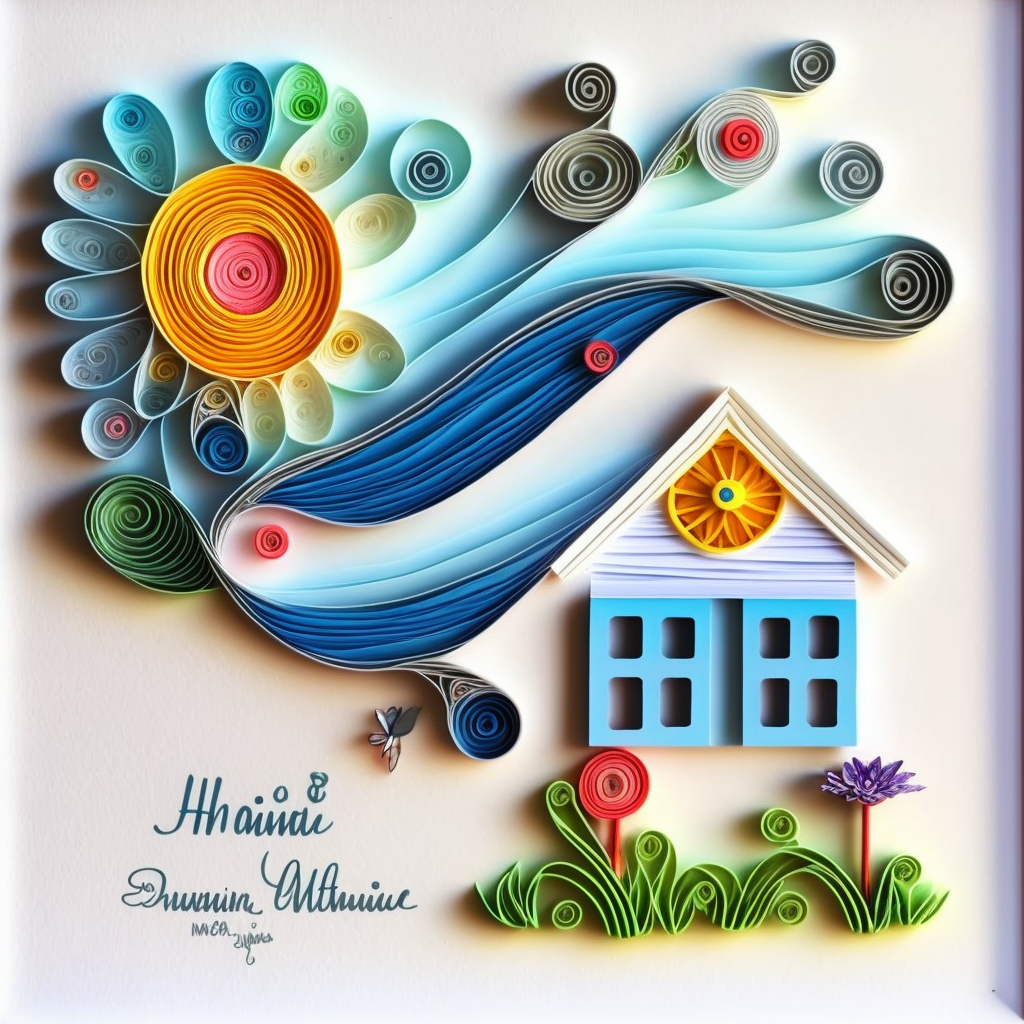
A professional consultant will explain the method and tools used to evaluate your home’s energy efficiency. This will include conducting a blower door test to measure how airtight your house is. The consultant will also inspect the locations of any mechanical systems. It is important to make sure they have clear access to assess the insulation and sealing of your attic properly.
Home energy rating
Energy efficiency is becoming increasingly important in our current economy, and many people are now looking for greener homes. Homeowners can improve the energy efficiency of their homes by making upgrades. Green home improvements can save not only the environment but also increase the home’s value. The Home Energy Score will give you the information you need in order to make informed decisions about how your home uses energy.
The energy advisor will explain everything to you before the evaluation can start. The advisor will take photos of various aspects of your house, including its mechanical systems, attic space, and wood-burning appliances. They will also explain the tools that they will use during the evaluation.
The Home Energy Score is a national standard used to assess the energy efficiency of a house. The rating system is designed to protect homeowners and prospective buyers. The Residential Energy Services Network (RESN) is an independent, nonprofit organization that developed rigorous testing and training standards for the process. The report provides recommendations on how to improve your home’s efficiency and includes an analysis of its efficiency.
A certified home energy assessor will help you understand your home’s energy consumption and recommend cost-effective upgrades. These assessors usually have certification and training from the Department of Energy. They will conduct a home energy audit from the attic to basement. The report will also include an EnerGuide rating.
A professional can conduct an energy assessment, or a homeowner can do it. A home energy assessment will include a checklist of upgrades that will help you prioritize your energy upgrades. A home energy assessment can be a valuable tool for making smart decisions about home improvement projects. However, it is not recommended that you attempt to do the work yourself unless your certification in the field is obtained. For example, if you know nothing about energy efficiency, you may end up spending more than you need to.
For a comfortable and healthy home, energy audits are essential. A certified energy auditor will look for inefficient appliances, rooms and the overall design of your home. If you need to improve energy efficiency, you may want to consider hiring a professional who has access to difficult to reach areas of the house and has access to infrared cameras.
Home energy audits provide customized reports and recommendations for improvements that will increase your house’s energy efficiency and lower your bills. These reports will be tailored to your budget and your needs. Some of the recommended improvements are easy enough to implement yourself, while others may require the assistance of a qualified contractor. There are many benefits to hiring a qualified contractor to perform these improvements. You’ll also receive a $100 SRP rebate that will be applied as an instant discount to your contractor’s invoice.
In addition to reducing monthly expenses, improving your home’s energy efficiency can also increase its value. It doesn’t matter if you’re buying a house for yourself or as an investment property. You should consider how energy efficient it is. By doing this, you can make your home more comfortable and increase its market value.
You’ll often pay a fee to hire an energy assessor to evaluate your home. If you are low-income, you may qualify for a free home energy assessment. Depending on your income, you may also qualify for extra incentives for qualifying energy-saving services. You should ensure that the costs of these improvements do not exceed the savings you will see over the long-term.
An energy audit is an important investment in improving your home’s energy efficiency. You can save money and improve your health with an energy assessment. By making home improvements, you’ll improve your home’s quality of life, reduce your utility bills, and create a safer environment for yourself and your family. You may be eligible for federal tax incentives to improve your energy efficiency.

Home energy audit
If you’re interested in lowering your home’s energy bills, hiring an expert to evaluate your house for energy efficiency is an excellent idea. These experts know the latest techniques and tools for conducting energy assessments. They also know where to look for potential issues. They may use tools such as thermal imaging cameras or radiometers to determine where your home loses energy.
A home energy audit will help you find opportunities for energy efficiency upgrades and make recommendations for improvements. The process can be a DIY project or a professional service. Although most people can perform the process themselves, hiring a professional is recommended when you don’t have the time or the necessary tools. A home energy audit checks for air leaks at junctures in walls and floors, doors and light switches, plumbing fixtures, and electrical outlands. It also checks for air leaks in your home, which can lead to high energy costs.
A home energy audit is the best choice if you want to lower your energy bills and improve your home’s comfort. An auditor will evaluate your house room by room, using special tools and cameras to find the problem areas. An auditor will also provide an estimate of the cost savings associated with different home improvements. You can find certified auditors through the Residential Energy Services Network directory or your local utility company. Many utility companies even offer subsidized energy audits for homeowners.
An energy assessment will include an analysis of the cost and benefits of energy efficiency upgrades. This means that the cost of the improvements will be worth the investment over the lifetime of your home. A qualified home energy assessment will give you a clear picture about which improvements are most beneficial and cost-effective. The report will also include recommendations for upgrades to boost your home’s efficiency.
Before an energy advisor visits your house, you must sign a consent form. It’s important to review the consent form carefully. Once you have agreed to the evaluation, the advisor will explain the evaluation process to you. The advisor will take photos of your home’s mechanical systems, attic space and wood-burning appliances. The tools used in the evaluation will be explained to you in detail.
While a certified energy auditor can recommend energy efficiency upgrades, it’s important to understand that no one assessment can meet all customer’s needs. In addition, various incentives are available for homeowners who make energy efficiency improvements. You can get a tax credit for upgrading your heating and air conditioning systems. You can also receive a rebate if you install on-site renewables such as solar photovoltaic systems or geothermal heat pumps.
An energy assessment can identify energy leaks and repair appliances that are in need of replacement or repair. A thorough home energy assessment can help you save money on your utilities bills. Although it is easy to do, it takes diligence. The results can give you a roadmap to lower your energy bills and improve your comfort.
There are two types of home energy assessments: general and detailed. To complete a general home energy audit, a certified energy auditor must be hired to gather detailed information about your house’s energy consumption. A professional energy auditor can identify areas that need improvement and is more thorough. You can also use a checklist to conduct your own home energy assessment.
An energy audit can help you make informed choices about how to improve your home’s energy efficiency. You will receive detailed reports highlighting areas where your house is using too much electricity and areas where you can improve its efficiency. These changes will help you save money and combat climate change.
A RESNET ratingr will determine the home’s HERS rating. The rater will compare your home to a standard reference house that meets code using specialized software. The resulting rating is usually a number between 0 and 150. For example, a score of 50 indicates your home uses 50% less energy than the code. A high HERS score can help your home earn an ENERGY STAR (zero energy) certification.
Energy efficiency can increase your home’s value and help you save money. Regardless of what your budget is, it’s a good idea to invest in energy-efficient upgrades and make your home more energy-efficient.
Hi, I’m Emma. I’m the Editor in Chief of Tiny House 43, a blog all about tiny houses. While tree houses are often associated with childhood, they can be the perfect adult retreat. They offer a cozy space to relax and unwind, surrounded by nature. And since they’re typically built on stilts or raised platforms, they offer stunning views that traditional homes simply can’t match. If you’re looking for a unique and romantic getaway, a tree house tiny house might just be the perfect option.
Understanding and Increasing Home Energy Efficiency
Who to Call For Energy Efficiency in House

There are many tools and resources available to help improve energy efficiency. You can find tips on how to be more energy-efficient in your home from organizations like PG&E and NYSERDA. These resources are usually free and can help lower your monthly utility bills.

PG&E
If you’re interested in reducing your energy consumption and lowering your monthly bills, PG&E has many energy efficiency programs for you to choose from. These programs are designed to meet the needs of different customers and their homes. These programs are available to homeowners, renters, mobile homes, and manufactured homes. You may be eligible to apply for multiple programs and use them all together.
One of the best ways to reduce energy bills is by switching to LED lightbulbs. These bulbs use far less energy than traditional bulbs and last longer. In addition, using task lighting instead of overhead lights can help you save energy. Smart thermostats are also available and can be programmed to run on a schedule. Some companies can rebate these devices up to $120. When choosing a thermostat, it’s recommended to set it to around 68 degrees in the winter and 78 degrees in the summer.
The Home Energy Report is one of PG&E’s innovative energy efficiency programs. This tool allows customers to understand how their homes affect their energy use and create a customized plan to achieve their goals. It gives customers tips on improving energy efficiency and compares homes with similar characteristics. Using the Home Energy Report, PG&E customers have saved more than $32,000,000 annually.
PG&E also offers the Energy Efficiency Loan Program. This loan program is available to all eligible customers until the program funds are depleted. Customers who are able to make significant energy savings may be eligible for this loan program. These loans can be used to fund a variety energy efficiency projects. Homeowners who purchase new appliances may also be able to save money. They may not be able to afford the initial cost of the equipment, but the energy savings will pay for themselves in the long run.
SmartMeter technology is a key foundation of PG&E’s SmartGrid effort. This technology will allow utilities to have greater control over their energy consumption and integrate renewable energy like solar and wind into their power grid more easily. Additionally, PG&E actively supports local governments in taking action to combat climate change by providing resources and training. A team of community energy managers can assist citizens and communities in reducing their energy consumption.
NYSERDA
If you’re interested in energy efficiency upgrades for your home, consider contacting a contractor participating in the NYSERDA for energy efficiency in-house program. These contractors are insured and backed by quality assurance inspections by NYSERDA. Participating contractors can be found online, by zip code, or by name.
Energy efficiency upgrades can lower energy bills and make your home more comfortable. Additionally, they are better for the environment. Getting an energy audit is a good way to learn where you are wasting energy and how you can fix it. An energy audit will also identify any problems with your system or appliances so that you can make necessary repairs or upgrades. It will also help you save money and time. Energy-efficient homes will be more comfortable throughout the year and lower your total ownership cost.
Another great way to save money is to upgrade lighting and appliances. NYSERDA offers financial incentives to those who are eligible for them. It also provides information about energy-efficient products. Additionally, it partners with experienced contractors to help residents make these improvements. With the help of a certified contractor, NYSERDA can also help you get the best deal on energy-efficient home improvements.
NYSERDA offers free home energy assessments, regardless of your income or home size. They offer programs that will help you reduce your energy bills and improve your home’s comfort. NYSERDA also provides low-interest loans for low-income people or non-traditional borrowers.
The EmPower New YorkSM Program can be a great way for you to upgrade your home. The program provides no-cost home improvements, including insulation, energy-efficient appliances and lighting. The program will assess your home’s energy efficiency and identify areas that can be improved. It will also offer technical support to contractors that are interested in making energy-efficient upgrades.
NYSERDA also invests to develop the clean energy talent pool. The program helps New Yorkers improve their energy efficiency, save money, and use renewable energy sources while reducing their dependency on fossil fuels. The program also provides incentives and training for new energy entrepreneurs and helps support a clean energy ecosystem.
The program has a long history in partnering with education and training systems. It is vital for the economy to have a skilled workforce that can adapt to changing circumstances. The organization is investing $108 million in training initiatives to ensure that these professionals are prepared for the changing industry. Many of these initiatives will target the incumbent workforce, while others will focus on identifying the skills needed for future jobs.
Hi, I’m Emma. I’m the Editor in Chief of Tiny House 43, a blog all about tiny houses. While tree houses are often associated with childhood, they can be the perfect adult retreat. They offer a cozy space to relax and unwind, surrounded by nature. And since they’re typically built on stilts or raised platforms, they offer stunning views that traditional homes simply can’t match. If you’re looking for a unique and romantic getaway, a tree house tiny house might just be the perfect option.
-

 Beginners Guides3 months ago
Beginners Guides3 months agoHow To Buy A Tesla Tiny House
-

 Energy Efficiency3 weeks ago
Energy Efficiency3 weeks agoBest Tiny Homes For Cold Climates
-

 Beginners Guides3 months ago
Beginners Guides3 months agoTiny House Nation Where Are They Now Stephanie
-

 Tiny House Resources (e.g., legalities, cost, insurance, FAQs)1 month ago
Tiny House Resources (e.g., legalities, cost, insurance, FAQs)1 month agoDo Tiny Homes Need Planning Permission?
-

 Beginners Guides3 months ago
Beginners Guides3 months agoFrom The Show Tiny House Nation How Many Keep Their Tiny House?
-

 Beginners Guides1 month ago
Beginners Guides1 month agoUsing a Climbing Net For Treehouse Construction
-

 Beginners Guides1 month ago
Beginners Guides1 month agoHow to Build a Treehouse Without Drilling Into the Tree
-

 Beginners Guides1 month ago
Beginners Guides1 month agoHow to Build a Treehouse Rope Bridge




